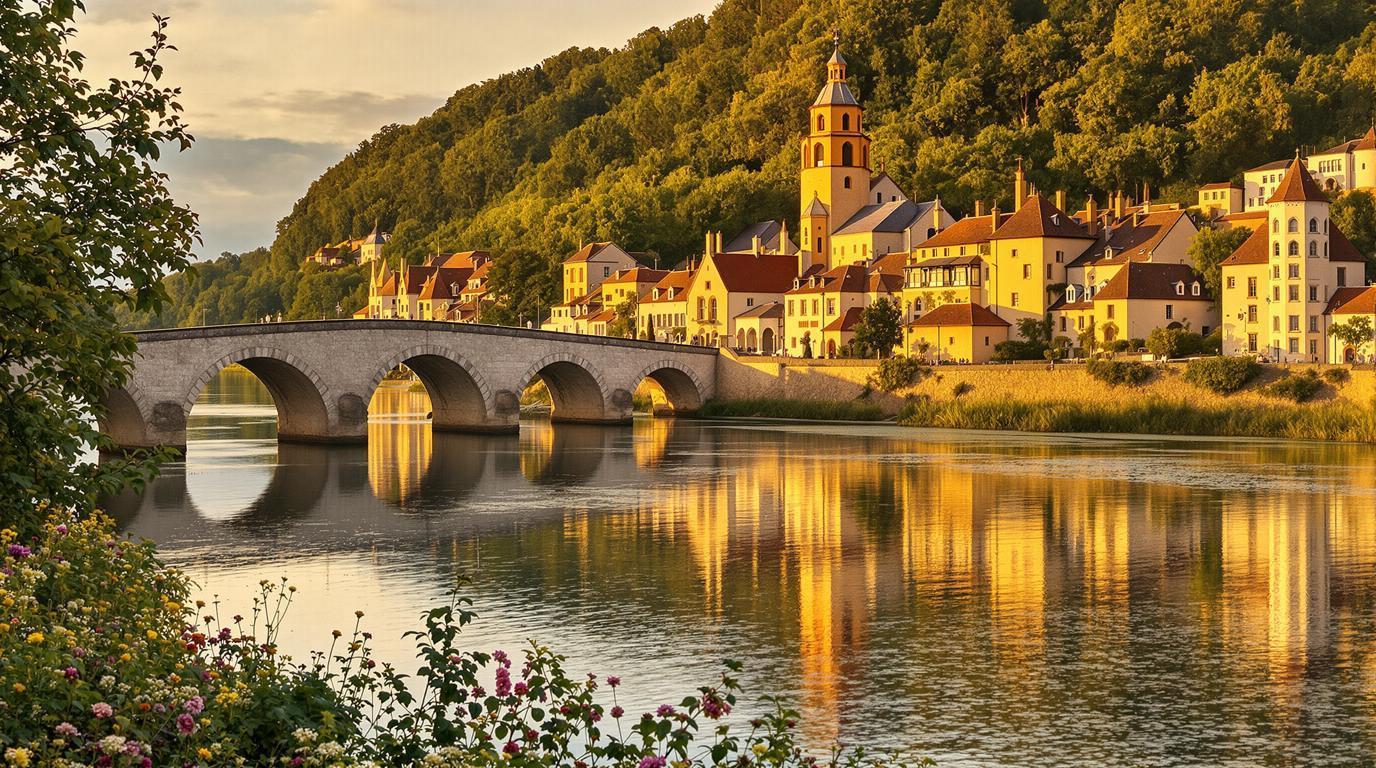A thousand years of French history converge in one undiscovered medieval jewel that’s mysteriously absent from most travel itineraries. Located just 34 miles from Dijon in eastern France, Pesmes ranks among “Les Plus Beaux Villages de France” yet remains blissfully untouched by mass tourism.
A medieval fortress where time stands still
Straddling the banks of the Ognon River in Bourgogne-Franche-Comté’s Haute-Saône department, Pesmes presents an authentic glimpse into medieval France. Unlike its more famous counterparts, this village of perfectly preserved ramparts and stone gateways maintains the quiet dignity that only comes with being overlooked.
“The beauty of Pesmes lies in its authenticity,” explains local historian Marie Dumont. “When visitors cross our stone bridge and see the village reflected in the river, they’re witnessing essentially the same view that travelers enjoyed five centuries ago.”
Architectural treasures hidden in plain sight
The village’s narrow streets reveal a timeline of architectural styles spanning centuries. The magnificent Church of Saint-Hilaire dates back to the 12th century, featuring a distinctive 18th-century colored roof on its belltower. Inside, 16th-century statues tell silent stories of local nobility.
Pesmes’ grand residences – Maison Royale, Maison Grandvelle, Hôtel Mairot – stand as monuments to the village’s importance during the Renaissance. Each building offers intricate stone carvings and historical details that rival those of France’s more celebrated cliff-side villages.
The island that locals keep secret
Across a small stone bridge lies Ile de la Sauvageonne, a natural retreat where villagers escape on warm afternoons. This tranquil island offers shaded walking paths and prime spots for picnicking beside gentle river currents – a place where conversations still take precedence over smartphone notifications.
Industrial heritage preserved in iron and stone
The Musée des Forges provides a fascinating glimpse into Pesmes’ industrial past. Long before tourists discovered the region, this was a center for iron forging, with techniques and traditions that influenced French craftsmanship for generations.
This commitment to preserving traditional crafts mirrors what’s happening in other medieval French villages experiencing artisan renaissances – though Pesmes’ revival remains delightfully under the radar.
A river runs through it
The Ognon River defines Pesmes both physically and culturally. Its gentle currents once powered mills and transported goods; today, it provides a stunning backdrop for photographers. Local guides suggest crossing the bridge at sunset when the village’s stone buildings glow amber against darkening skies.
“Ask any resident where to find the best view of Pesmes, and they’ll point you to the opposite riverbank,” says Jean Moreau, a lifelong resident. “From there, you understand why painters have been drawn to this place for centuries.”
The perfect base for regional exploration
Pesmes sits strategically near several notable attractions: the Royal Saltworks of Arc-et-Senans (32 km), historic Dole (22 km), and Besançon with its UNESCO-listed citadel (34 km). Unlike popular coastal villages of the French Riviera, Pesmes offers authentic encounters without crowds.
A commitment to sustainable tourism
Earning the “Station Verte” (Green Station) designation, Pesmes embraces environmentally conscious tourism practices. This approach preserves both natural landscapes and traditional ways of life – creating experiences far removed from Tanzania’s wild safaris yet equally authentic in their cultural immersion.
The village’s preservation efforts mirror those of small California towns protecting natural treasures – proving that responsible stewardship transcends continents.
When to experience Pesmes at its finest
Visit between April and October when riverside cafés spill onto cobblestone streets and medieval architecture basks in golden light. Spring brings wildflowers along rampart walls, while autumn casts the surrounding forests in breathtaking colors.
As twilight descends on Pesmes and lanterns illuminate ancient stone walls, you’ll wonder how such a perfectly preserved medieval village remains France’s best-kept secret – and perhaps feel grateful that it does.
